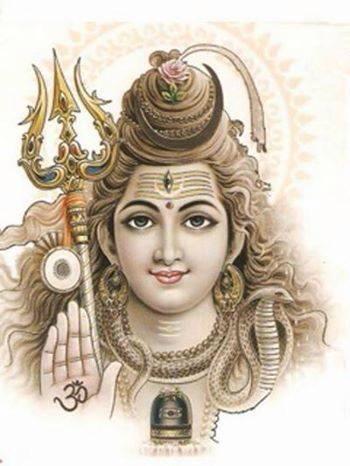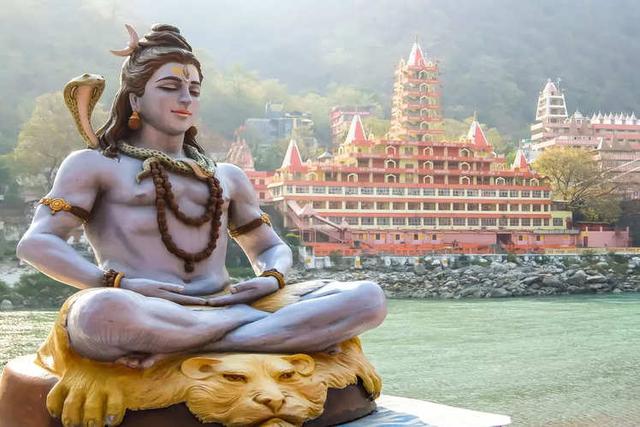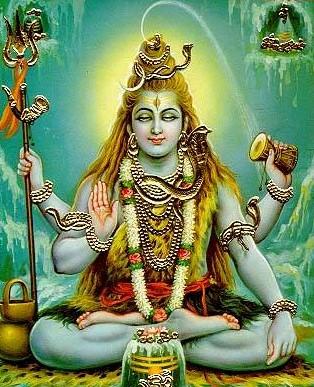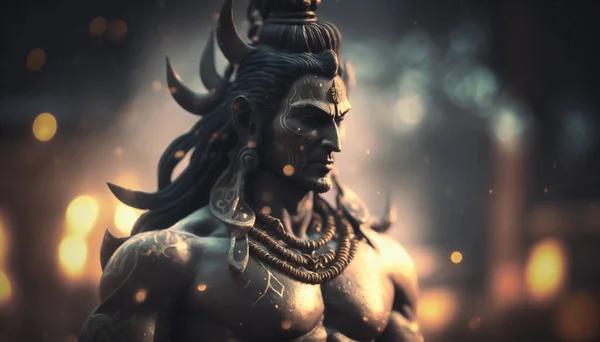Discover the Divine Aura with Mesmerizing Shiv Images for Spiritual Enlightenment
“Captivating and Inspiring: Explore the Mesmerizing World of Shiv Image”
1. The Depiction of Lord Shiv in the Image
The image represents Lord Shiva, one of the principal deities in Hinduism. Lord Shiva is often depicted as a divine being with multiple arms and matted hair. In this particular image, Lord Shiva is shown in a meditative pose, known as the “Dhyana Mudra”, symbolizing his deep contemplation and connection with spiritual energy.
The image portrays Lord Shiva with his third eye open, which represents his wisdom and inner vision. His third eye is believed to have the power to destroy ignorance and darkness. The crescent moon on his forehead signifies his transcendent nature and eternal peace.
Additionally, Lord Shiva is often depicted wearing a snake around his neck, symbolizing his control over desire and passion. The snake also represents transformation and rejuvenation. He is shown holding a trident called “Trishul,” which symbolizes his power to destroy evil forces and maintain cosmic order.
Symbolic Attributes Associated with Lord Shiv:
– Matted Hair: Represents spiritual energy and detachment from worldly desires.
– Third Eye: Symbolizes wisdom, intuition, and insight.
– Crescent Moon: Signifies transcendence and eternal peace.
– Snake: Represents transformation, rejuvenation, control over desire.
– Trishul (Trident): Symbolizes power to destroy evil forces.
2. Describing the Physical Appearance of Lord Shiv in the Image

In this image, Lord Shiva is depicted as having a light blue complexion signifying his association with celestial realms. He has four arms, each holding symbolic objects such as a trident (Trishul), a damru (small drum), an axe (Parashu), or a skull depicting his detachment from materialistic worldliness.
Lord Shiva’s upper body is bare except for sacred ash (vibhuti) smeared across his skin. The sacred ash represents the transient nature of life and signifies the eventual dissolution of all worldly attachments.
The image also portrays Lord Shiva adorned with various ornaments, including necklaces made of Rudraksha beads, which are considered holy in Hinduism. He is often depicted wearing a tiger skin around his waist, symbolizing his ability to conquer and control animalistic tendencies.
Physical Attributes of Lord Shiv in the Image:
– Light blue complexion
– Four arms holding symbolic objects
– Sacred ash (vibhuti) smeared on the body
– Adorned with Rudraksha necklaces
– Wearing a tiger skin around the waist
3. Describing the Physical Appearance of Lord Shiv in the Image
The image of Lord Shiv in this depiction shows him with a pale blue complexion, which is often associated with his divine nature. He is shown with matted hair, symbolizing his ascetic and renunciant qualities. The hair is adorned with a crescent moon, indicating his connection with the celestial realms. Lord Shiv is depicted wearing a snake around his neck, representing his power over life and death. His upper body is bare, showcasing his ruggedness and primal energy.
In this particular image, Lord Shiv’s third eye can be seen prominently on his forehead. This third eye represents insight and spiritual wisdom. It is believed that when Lord Shiv opens his third eye, it unleashes destructive forces to maintain balance in the universe.
Specific Features Depicted:
- Pale blue complexion
- Matted hair with crescent moon
- Snake around the neck
- Bare upper body
- Third eye on forehead
4. Common Locations or Places of Worship for this Image of Lord Shiv

This image of Lord Shiv can be found in various places of worship dedicated to him across India and other parts of the world where Hinduism is practiced. Some common locations where this image may be worshipped include temples dedicated to Lord Shiv such as the Kashi Vishwanath Temple in Varanasi, Uttar Pradesh or the Brihadeeswarar Temple in Thanjavur, Tamil Nadu.
In addition to temples, smaller shrines dedicated to Lord Shiv can also be found in home altars or domestic spaces where individuals or families perform their daily devotions. Many devotees also carry images or statues of Lord Shiv with them as a form of personal worship, believing that his presence brings protection and blessings.
Common Locations:
- Kashi Vishwanath Temple, Varanasi
- Brihadeeswarar Temple, Thanjavur
- Home altars and domestic spaces
5. Events and Mythological Stories Represented by this Image of Lord Shiv
The image of Lord Shiv in this depiction represents various important events and mythological stories associated with him. One commonly depicted event is the marriage between Lord Shiv and Goddess Parvati, known as the divine union of Shiva and Shakti. This union symbolizes the balance between masculine and feminine energies within creation.
Another significant event represented is Lord Shiv’s role as Nataraja, the cosmic dancer. This form emphasizes Lord Shiv’s ability to bring forth destruction and transformation, as well as his connection with the rhythm of life.
Represented Events:
- The marriage between Lord Shiv and Goddess Parvati
- Lord Shiv as Nataraja, the cosmic dancer
6. Unique Features and Differences in the Portrayal of Lord Shiv in this Image

This particular image of Lord Shiv showcases some unique features and differences compared to other depictions. One notable difference is the presence of additional symbols or objects around Lord Shiv, such as a trishula (trident) representing his power over creation, preservation, and destruction.
In terms of unique features, this image emphasizes the third eye on Lord Shiv’s forehead more prominently than other depictions. It highlights his ability to perceive beyond the physical realm and access higher knowledge.
Unique Features and Differences:
- Presence of a trishula (trident)
- Prominence given to the third eye
7. Conveying the Essence and Qualities of Lord Shiv through the Image

This image of Lord Shiv aims to convey his essence and qualities to devotees. It portrays Lord Shiv as a powerful deity who possesses both destructive and benevolent qualities, symbolizing his role in maintaining balance in the universe.
The image also conveys Lord Shiv’s association with meditation, asceticism, and spirituality. His matted hair, bare upper body, and serene expression reflect his renunciant nature and deep connection with divine consciousness.
Essence and Qualities:
- Destructive yet benevolent nature
- Association with meditation and spirituality
- Renunciant qualities
In conclusion, the Shiv image holds immense cultural and religious significance. Its intricate details and symbolism make it a revered object among Hindus. The image serves as a reminder of Lord Shiva’s divine attributes and stands as a symbol of devotion and spirituality for millions around the world.
